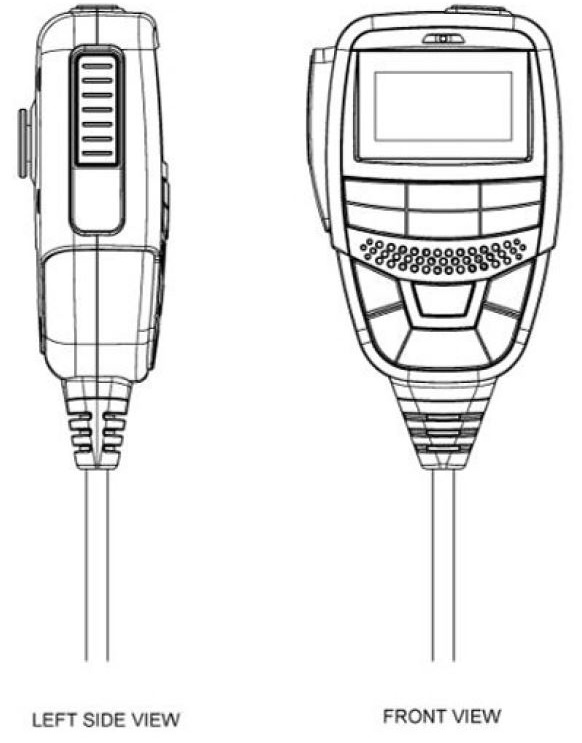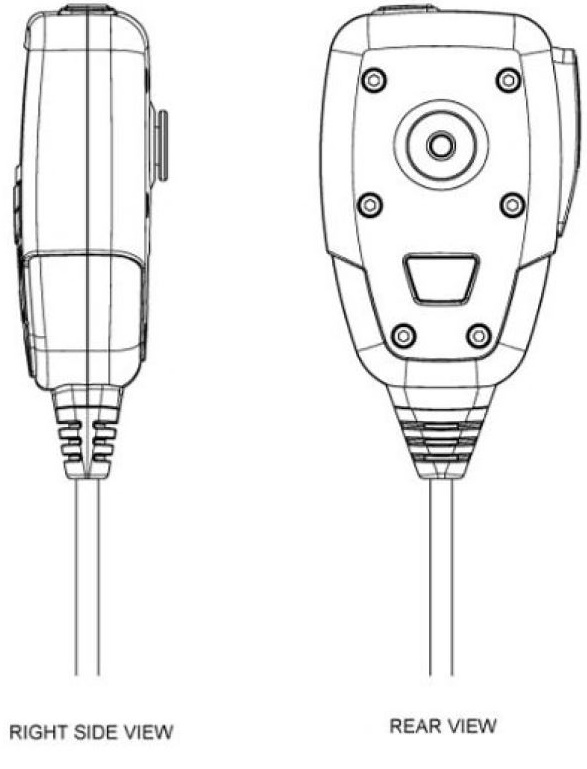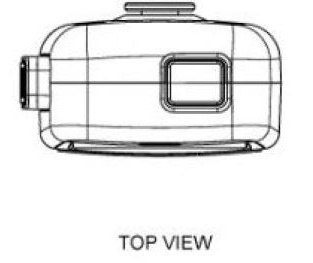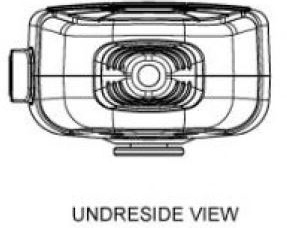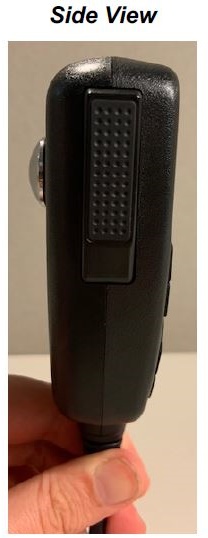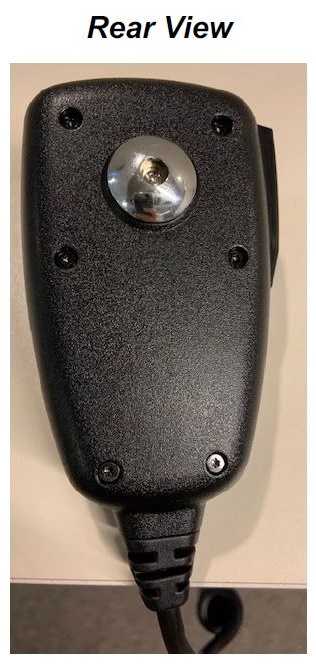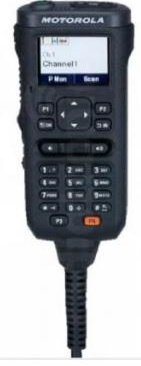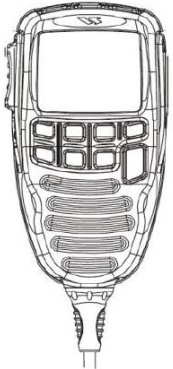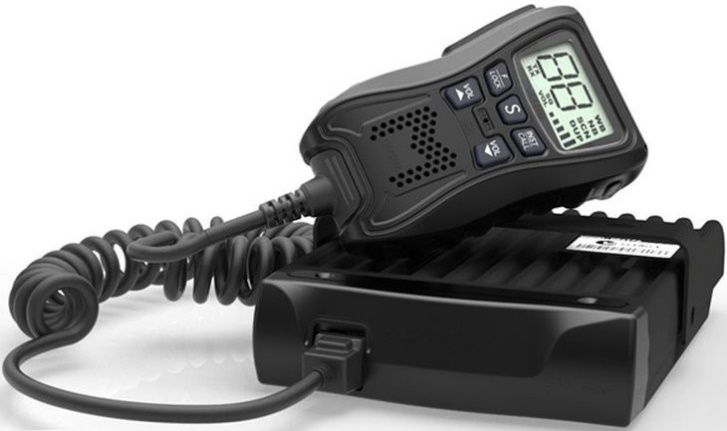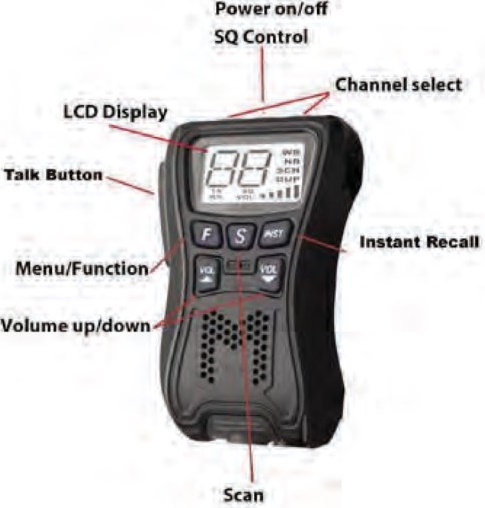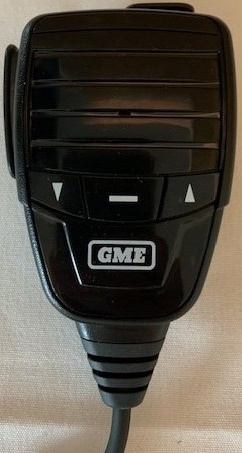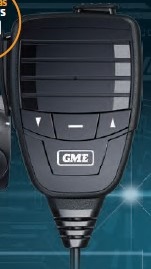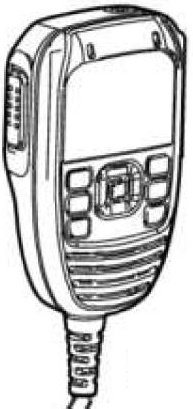Federal Court of Australia
GME Pty Ltd v Uniden Australia Pty Ltd [2022] FCA 520
ORDERS
Applicant | ||
AND: | Respondent | |
DATE OF ORDER: |
THE COURT ORDERS THAT:
1. Within 7 days the parties confer and provide short minutes of orders to the chambers of Justice Burley giving effect to these reasons and addressing the question of costs and further conduct of the proceedings.
2. The matter be listed for a case management hearing at 9.30am on 18 May 2022.
Note: Entry of orders is dealt with in Rule 39.32 of the Federal Court Rules 2011.
[1] | |
[4] | |
[6] | |
[7] | |
[9] | |
[16] | |
[38] | |
[38] | |
[39] | |
[43] | |
[44] | |
[45] | |
[46] | |
[47] | |
[48] | |
[49] | |
[50] | |
[51] | |
[52] | |
[53] | |
3.5 Relevant functional aspects of microphones and freedom to innovate | [57] |
[63] | |
[63] | |
[65] | |
[76] | |
[87] | |
BURLEY J:
1 GME Pty Ltd contends that Uniden Australia Pty Ltd threatens to infringe design No 201613671 (GME design) by the launch of its XTRAK UHF mobile radio product. The GME design is registered under the Designs Act 2003 (Cth) for a microphone, and has a priority date of 12 July 2016. Uniden does not dispute the validity of the GME design, but denies that XTRAK would infringe within the terms of s 71 of the Act.
2 The proceedings were brought to a final hearing quickly, in order to obviate the need for an interlocutory injunction application. All questions concerning GME’s entitlement to pecuniary relief will be heard and determined, if necessary, after the issue of infringement has been decided.
3 For the reasons set out below, I have found that the XTRAK embodies a design that is substantially similar in overall impression to the GME design.
4 The GME design is depicted in seven drawings lodged in respect of the design application, copies of which are included in Appendix 1 to these reasons. For convenience, the isometric view, front and rear views are reproduced here.



5 The GME design includes the following statement of newness and distinctiveness:
Newness and distinctiveness is claimed in the features of shape and/or configuration of a microphone as illustrated in the accompanying representations.
1.2 The alleged infringement: XTRAK
6 The XTRAK is depicted more fully in Appendix 2 to these reasons. Isometric, front and rear views of the product are depicted below:



7 The prior art relied upon for the purposes of assessing whether or not the XTRAK embodies a design that is identical to, or substantially similar in overall impression to, the GME design consists of the following, each of which is depicted in Appendix 3 to these reasons:
(1) Motorola PMLN7131;
(2) Standard Horizon PS1000;
(3) Simoco SRM9022;
(4) GME TX3350;
(5) GME GX750;
(6) Icom HM195GB controller mic;
(7) Crystal DB477D;
(8) GME TX4500S; and
(9) ICOM IC450.
8 GME also referred to one Uniden product, depicted in Appendix 4, which was relied upon solely for the purpose of freedom to design.
9 GME relies on the evidence of Graeme MacDonald, who has worked as a designer since 1981, and has since 2000 been a director of Cube Design Pty Ltd, an industrial design company providing industrial design and product engineering services to clients. He first designed a radio frequency product in 1990 and has since then been engaged in a number of projects involving the industrial and mechanical design of handheld radios, including specific projects in 1998, 2004, 2006, 2008 and 2018. This work involved the disassembly of competitor products in order to study the construction and styling of the product.
10 For his first affidavit, Mr MacDonald was provided with some of the prior art by the solicitors acting for GME. He gave evidence about the basic ergonomic requirements that the designer has to consider when designing handheld microphones, noting that they must be able to be held in the hand, that the user interface should be simple enough not to require the reading of detailed manual instructions for basic functions. He explains that the press to talk (PTT) button should usually be in the same place, on the side of the device on the left, although the shape of the button can be different. He gives evidence that otherwise there is generally freedom with the remainder of the design of the product, and that it is “quite easy” to make a product look different to that of a competitor.
11 Mr MacDonald gives his views of the GME design, the XTRAK product and the prior art. In his second affidavit Mr MacDonald reviews additional pieces of prior art that were provided to Mr Simpson, and responds to Mr Simpson’s first affidavit.
12 Uniden relies on the evidence of Andrew Simpson, who has been an industrial designer since 2004 and a principal of Vert Design Pty Ltd since 2005. He gives evidence that he has worked with clients from a broad range of industries and has been engaged in the design of outdoor furniture, vertical gardens, lighting and electric vehicle charging stations. He has also been involved in design projects involving consumer electronics including wearable fitness technology devices, a laptop, virtual reality headsets and bushfire-detection devices. Between 2014 and 2016 he was a guest lecturer in industrial design practice at the University of Technology of Sydney and between 2018 and 2020 he was a tutor in a final-year design studio subject for students studying a Bachelor of Industrial Design at University of New South Wales. Unlike Mr MacDonald, he has not been involved in the design of a handheld radio. In his oral evidence, Mr Simpson explained that whilst he had had no professional experience designing handheld microphones, he had for many years been an offshore yachtsman who has used them, including some within the prior art in the present proceedings. He has also provided design advice to the bushfire and police services, which required some involvement in microphone usage over their citizen band radio systems.
13 In his first affidavit Mr Simpson gives evidence of the design process that he adopts when working with a new client. He was then provided by the solicitors for Uniden with documents depicting the nine items of prior art in suit, each of which he described. He then described the GME design and compared that with the XTRAK. He was then asked to consider the design of the XTRAK and express an opinion as to whether or not it is substantially similar in overall impression to the GME design. He then responds to the first affidavit of Mr MacDonald.
14 The experts met before the hearing and produced a helpful and well–laid-out joint expert report that synthesised the differences in their views. They gave evidence concurrently during the course of the hearing.
15 I consider that both experts did their best to assist the court. Both may be regarded to be broadly persons who are familiar with the product to which the design relates, or products similar to the product to which the design relates and accordingly meet the description of the informed user within s 19(4) of the Act. However, plainly Mr MacDonald’s professional experience in the design of handheld microphones exceeds that of Mr Simpson, who has considerable and distinguished experience as a designer but none in the design of the devices in question. Mr Simpson’s qualification to give expert evidence in the present case arises from his general qualifications and his personal use of products similar to that embodied in the design. As to the relevance of such evidence, see Multisteps Pty Ltd v Source and Sell Pty Ltd [2013] FCA 743, 214 FCR 323 at [66]-[70] (Yates J). I take this into account in assessing their evidence.
16 Section 5 of the Act includes the following definitions:
registered design, at a particular time, means a design that is registered at that time
design, in relation to a product, means the overall appearance of the product resulting from one or more visual features of the product.
17 Section 7 of the Act includes the following definition of “visual feature”:
(1) In this Act:
visual feature, in relation to a product, includes the shape, configuration, pattern and ornamentation of the product.
(2) A visual feature may, but need not, serve a functional purpose.
(3) The following are not visual features of a product:
(a) the feel of the product;
(b) the materials used in the product;
(c) in the case of a product that has one or more indefinite dimensions:
(i) the indefinite dimension; and
(ii) if the product also has a pattern that repeats itself—more than one repeat of the pattern.
(Emphasis in original)
18 Section 10 of the Act confers on the registered owner of a registered design various exclusive rights including the right to make or offer to make a product, in relation to which the design is registered, which embodies the design (s 10(1)(a)); or import for sale (s 10(1)(b)) or sell or offer for sale (s 10(1)(c)) any such product.
19 Chapter 2, Part 4 of the Act concerns the validity of registrable designs.
20 Section 15(1) provides that a design is registrable if it is new and distinctive when compared with the prior art base as it existed before the priority date of the design.
21 The “prior art base” is also relevant to the question of whether or not an accused product infringes a registered design. It is defined in s 15(2) relevantly to include designs publicly used in Australia and designs published in a document within or outside Australia before the priority date.
22 Section 16(1) identifies that a design will be new unless it is identical to a design that forms part of the prior art base. Section 16(2) provides that a design is distinctive unless it is substantially similar in overall impression to a design that forms part of the prior art base.
23 Chapter 6, Part 2, concerns infringement of a registered design.
24 Section 71 of the Act relevantly provides:
(1) A person infringes a registered design if, during the term of registration of the design, and without the licence or authority of the registered owner of the design, the person:
(a) makes or offers to make a product, in relation to which the design is registered, which embodies a design that is identical to, or substantially similar in overall impression to, the registered design; or
(b) imports such a product into Australia for sale, or for use for the purposes of any trade or business; or
(c) sells, hires or otherwise disposes of, or offers to sell, hire or otherwise dispose of, such a product; or
(d) uses such a product in any way for the purposes of any trade or business; or
(e) keeps such a product for the purpose of doing any of the things mentioned in paragraph (c) or (d).
…
(3) In determining whether an allegedly infringing design is substantially similar in overall impression to the registered design, a court is to consider the factors specified in section 19.
…
25 The words “substantially similar in overall impression” were introduced with the passing of the Act, which replaced the Designs Act 1906 (Cth) (1906 Act). The Australian Law Reform Commission (ALRC) in its report on Designs, Designs (Report No 74, 1995) (ALRC Report), said (at para 6.7):
The courts have used and interpreted the expression ‘substantially similar’ on many occasions in the context of infringement of intellectual property. It is desirable to use words with which practitioners and the courts are familiar. The word ‘substantially’ is preferred to ‘significantly’ because ‘substantially’ has already been interpreted in a copyright context to be a qualitative and not quantitative term. The qualitative test is useful to determine designs infringement without importing a copying criterion. A qualitative test will assist the courts in evaluating the importance of the similarities and differences between competing designs. The recommended words are also less onerous than ‘obvious imitation’ which requires striking similarity and implies copying. The phrase ‘overall impression’ is preferred because it encourages the court to focus on the whole appearance of competing designs instead of counting the differences between them.
(Citations omitted) (Emphasis added)
The ALRC Report formed the basis of the Act: Explanatory Memorandum, Designs Bill 2002 (Cth) at 1.
26 In Hunter Pacific International Pty Ltd v Martec Pty Ltd [2016] FCA 796; 121 IPR 1, Nicholas J noted:
38 The question that must be decided under s 71(1) is whether the Razor embodies a design that is substantially similar in overall impression to the Registered Design. Since the word “design” is defined for the purposes of the Act to mean the “overall appearance” of the product resulting from its “visual features” the question whether two designs are substantially similar is to be decided on the basis of a visual comparison of the shape and configuration of the two designs. In deciding this question the Court must have regard to the requirements of s 19 of the Act.
39 The question whether two designs are substantially similar is ultimately a question for the Court to decide applying the standard of the “informed user”. The informed user is a notional person who is taken to be familiar with the product to which the design relates or products similar to the product to which the design relates. The informed user will also be taken to have a familiarity with the Registered Design and the product that is alleged to infringe based upon a careful and deliberate visual inspection. Section 19 of the Act contemplates that the Court will have regard to all the similarities and the differences between the visual features of the two designs in coming to its ultimate conclusion. Hence, the relevant comparison cannot be based upon a fleeting or casual inspection of the drawings or object in question or some “imperfect recollection” of either of them. That is not to deny that the comparison to be undertaken is essentially impression based. I therefore respectfully agree with the following statement of Yates J in Multisteps Pty Ltd v Source and Sell Pty Ltd (2013) 214 FCR 323 at [55]:
… although the test is based on impression, it is not based merely on a casual comparison between designs for a given article. There needs to be a studied comparison based on the prescriptions of s 19 of the Designs Act. Thus, the notion of “imperfect recollection” — familiar in trade mark law — has no application when determining design similarity …
27 It is necessary to focus on the overall impression created by the two designs. This is done not by ignoring matters of detail, but by assessing the impact of particular visual features, including any matters of detail, on the overall impression created by each of the two designs.
28 Section 19 prescribes, for the purposes of s 71(3) and also s 16(2), the factors to be considered in assessing substantial similarity in overall impression.
29 As at the priority date, s 19 provided:
19 Factors to be considered in assessing substantial similarity in overall impression
(1) If a person is required by this Act to decide whether a design is substantially similar in overall impression to another design, the person making the decision is to give more weight to similarities between the designs than to differences between them.
(2) The person must also:
(a) have regard to the state of development of the prior art base for the design; and
(b) if the design application in which the design was disclosed included a statement (a statement of newness and distinctiveness) identifying particular visual features of the design as new and distinctive:
(i) have particular regard to those features; and
(ii) if those features relate to only part of the design—have particular regard to that part of the design, but in the context of the design as a whole; and
(c) if only part of the design is substantially similar to another design, have regard to the amount, quality and importance of that part in the context of the design as a whole; and
(d) have regard to the freedom of the creator of the design to innovate.
(3) If the design application in which the design was disclosed did not include a statement of newness and distinctiveness in respect of particular visual features of the design, the person must have regard to the appearance of the design as a whole.
(4) In applying subsections (1), (2) and (3), the person must apply the standard of a person who is familiar with the product to which the design relates, or products similar to the product to which the design relates (the standard of the informed user).
(5) In this section, a reference to a person includes a reference to a court.
(Emphasis in original)
30 Section 19(1) of the Act requires the Court to give more weight to the similarities between the designs than to the differences between them. This requirement was the subject of a recommendation by the ALRC. The ALRC stated (at para 6.24 of the ALRC Report) that the focus on similarities would help to overcome the narrow approach of limiting protection to one individual and specific appearance of the article bearing the design.
31 In Hunter Pacific, Nicholas J said of s 19(2)(a):
44 Section 19(2)(a) requires the Court to have regard to the state of the development of the prior art base for the design. This is the approach that was usually taken under the 1906 Act but s 19(2)(a) explicitly requires that this be done. The approach under the 1906 Act was explained in Dart Industries Inc v Décor Group Pty Ltd (1989) 15 IPR 403 by Lockhart J at 409:
The scope of a registered design must be determined with reference to the background of the prior art at the priority date and questions of infringement and novelty or originality are connected. In Hecla Foundry Co v Walker, Hunter & Co (1889) 14 App Cas 550 Lord Herschell said at 555: “... one may be able to take into account the state of knowledge at the time of registration, and in what respects the design was new or original, when considering whether any variations from the registered design which appear in the alleged infringement are substantial or immaterial.”
Where novelty or originality is discovered in slight variations, there cannot be infringement without a very close resemblance between the registered design and the article alleged to be an infringement of the design. Lloyd-Jacob J in Rosedale Associated Manufacturers Ltd v Airfix Products Ltd [1956] RPC 360 at 364 said that the court would have regard to what was “known and old”, and: “... if the particular features which provide a novel conception have not been reproduced in the alleged infringement, the similarity of appearance between the article complained of and the registered design if present must necessarily reside in the common possession of characteristics which are free to everybody to employ.” See also Macrae Knitting Mills Ltd v Lowes Ltd (1936) 55 CLR 725 per Dixon J at 731 and L J Fisher & Co Ltd v Fabtite Industries Pty Ltd (1978) 49 AOJP 3611 per Fullagar J at 3620.
Small differences between the registered design and the prior art will generally lead to a finding of no infringement if there are equally small differences between the registered design and the alleged infringing article. On the other hand, the greater the advance in the registered design over the prior art, generally the more likely that a court will find common features between the design and the alleged infringing article to support a finding of infringement […]
(Some citations omitted)
32 The passage from Dart Industries Inc v Décor Group Pty Ltd [1989] FCA 49; 15 IPR 403 set out above was also cited in Keller v LED Technologies Pty Ltd [2010] FCAFC 55; 185 FCR 449 at [46] (Emmett J) and at [236] (Besanko J, Jessup J agreeing at [354]) in the context of consideration of the approach to be taken to the prior art in s 19(2). It will be noted that the test for want of distinctiveness under s 16(2) adopts the formulation that a design is distinctive unless it is “substantially similar in overall impression” to a design that forms part of the prior art base and, similarly requires consideration of the factors set out in s 19. The Court in Keller noted that s 19(1)(a) has a role to play in consideration both of validity and also infringement, but that its chief field of operation may well be in relation to infringement (at [237]). It noted at [234] the important proposition, set out by Laddie J in Household Articles Ltd’s Registered Design [1998] FSR 676 at 686, that:
A design can be novel even if it is made up entirely by blending together a number of old designs provided the resulting combination itself has a sufficiently distinctive appearance. It is only where all the features have been used before, and used commonly (or are immaterial), that the Act deems them to be novelty-destroying.
33 That proposition has plain application in the context of the assessment of infringement. Whilst these statements of principle arose under the 1906 Act, the Court considered that the approach to the state of the prior art base for a design is the same or similar under the 2003 Act (at [238]).
34 In Keller, a submission advanced on appeal (at [230]) was that, whilst “mosaicking” of the prior art was impermissible, the primary judge erred by confining the provisions of the Act to a design-by-design comparison which would, it was submitted, make it easier to qualify for registration. In those circumstances, the Act should be read as requiring a close examination of the prior art base “as a whole”. That submission was rejected. The Full Court endorsed the relevant statements of principle of the primary judge as applicable to the question of infringement (at [260]). The relevant statement of the primary judge in LED Technologies Pty Ltd v Elecspess Pty Ltd [2008] FCA 1941; 80 IPR 85 is at [55] (Gordon J):
Secondly, contrary to the Respondents’ submissions, distinctiveness is to be assessed not by comparing the design in question to the prior art base as a whole but by comparing it individually to each relevant piece of prior art: s 15(1) read with ss 16(1) and (2). Part 4 of Chapter 2 of the 2003 Designs Act must be read as a whole. The Respondents cannot, as they do, simply selectively choose ss 15(1) and 19(2) to support their contention that a comparison is made of the design with the totality of the entire relevant prior art base for that design whilst ignoring the express words of the rest of Pt 4 including ss 16 and 19(1). It is those sections which expressly provide that a design is distinctive unless it is substantially similar in overall impression to a design that forms part of the prior art base for the design. As a result, a design that combines various features, each of which can be found in the prior art base when considered as a whole but not in any one particular piece of prior art, is capable of being distinctive: Review 2 Pty Ltd v Redberry Enterprise Pty Ltd [2008] FCA 1588 at [60]; Karen Millen Ltd v Dunnes Stores Ltd [2008] ECDR 11 at [82]-[84] (stating that the registered design must be assessed with regard to particular prior designs rather than a hypothetical amalgam of a number of prior designs). See also Lockwood Security Products Pty Ltd v Doric Products Pty Ltd (2007) 235 ALR 202 (upholding the validity in the patent context of a combination of features known collectively in the prior art).
(Emphasis added)
35 There was some suggestion in the submissions advanced on behalf of GME that a more general use should be made of the prior art base in the present case, when considering the requirements of s 19(2)(a). However, for the reasons set out above, that suggestion must be set to one side.
36 In Hunter Pacific, Nicholas J further elucidated the requirements under s 19(2):
45 Section 19(2)(b) requires the Court to have regard to any particular visual features of the design identified in any statement of newness and distinctiveness included in the design application. If the design application includes such a statement identifying any such visual features, then the Court is required to have “particular regard” to those features. Again, this is the approach that was usually taken under the 1906 Act but the 2003 Act now includes an explicit requirement to this effect: cf. Fisher & Paykel Healthcare Pty Ltd v Avion Engineering Pty Ltd (1991) 103 ALR 239 at 246-247.
46 Section 19(2)(c) requires that if only part of the design is substantially similar to another design, the Court must have regard to the amount, quality and importance of that part in the context of the design as a whole. This is significant in two respects. First, it assumes that a product may be substantially similar in overall impression to a registered design even though a particular part of the product is not substantially similar to the corresponding part of the registered design. Secondly, it requires the Court to make a qualitative rather than a purely quantitative assessment of the visual similarities and differences between the two designs when deciding upon the question of infringement in much the same way as it must when applying the test of substantiality in the field of copyright law.
(Emphasis added)
37 Section 19(2)(d) requires the Court also to have regard to “the freedom of the creator of the design to innovate”, the “design” being the registered design in question (see s 19(2)(a), (b)). This requirement arose from a recommendation in the ALRC Report, which noted that this will “allow more weight to be given to small differences where limited scope for variation is afforded. Numerous factors can limit design freedom including the market for the product and marketing constraints” (at [5.24]). In Review 2 Pty Ltd v Redberry Enterprise Pty Ltd [2008] FCA 1588; 173 FCR 450 (Kenny J), the Court considered that the designs for ladies’ garments were invariably limited by what women customarily wear. In the case of cross-over dresses, the designer’s freedom to innovate was largely limited to the shape of the skirt and differences in pattern (at [42]). Conversely, the design features that rendered the designs in LED Technologies distinctive from the prior art were quite arbitrary, in that they were the result of a conscious design choice, not compelled by industry-wide standards or technological constraints (LED Technologies at [65]). Industry standards requirements, including for a product to fit into another or be displayed in a shelf in a certain way or the functional requirements of the product, may all be taken into consideration. As noted by Nicholas J in Hunter Pacific at [47], this requirement reflects what has been a long standing concern that registered designs not impede the natural and ordinary growth of industry by preventing others from making products that have features of shape and configuration that are common to a trade.
38 I commence by describing the features of the GME design and the prior art products. In this regard I take into account the likelihood that the user of such devices will typically see each from the front face or isometric view, because when not in use it will sit on a radio set connected by the rear lug to that set, facing outwards. In use, it will be held in one hand, with the user often looking at the screen and buttons, speaking into the front face microphone.
39 The statement of newness and distinctiveness claims newness and distinctiveness in all of the visual features of the design, without particular regard to one or more of those features (s 19(2)(b)).
40 The GME design is disclosed in the seven drawings appended to the registration, which are reproduced in Appendix 1. The following observations may be made.
41 The GME design is for a microphone which is connected by a cable to a device. As depicted, it contains the following:
(1) The overall shape of the product in front view is a vertically-symmetrical curve-sided trapezoid, tapering to the base. In front view, the outline, or silhouette, may be seen to have a small step-in at the waist, immediately beneath the speaker, which travels around the sides and dips towards the lower portion at the rear of the device. The silhouette is matched on the front face by a line of inner curvature that follows the circumference of the device.
(2) Below the top of the main housing is a panel with a small trapezial microphone recess that has a barely discernible hole at its centre, which houses the microphone.
(3) The rectangular display screen is near to the top of the device and has a rectangular screen surround that frames it. The screen surround is flat and more or less flush with the face of the device at its top, but is slightly recessed in its lower portion.
(4) Underneath the screen surround is an array of 6 upper buttons in a 3 wide by 2 down format that forms an unbroken panel. The buttons are substantially rectangular except that their outer edges follow the form of the device, and so curve slightly from top to bottom. The lower edge of the bottom buttons follows the curve of the speaker and the upper edge of the top buttons has a slight downwards curve.
(5) Underneath the buttons there is a narrow speaker grille, which separates the buttons at the top of the device from those at the bottom. The speaker is a narrow curved grille spanning the full width of the front face of the device.
(6) The step-in is beneath the speaker. Beneath it is a radial/trapezoidal array of five lower buttons surrounding one central trapezoidal central button. The five buttons follow the outline, or silhouette of the outline of the main housing in a U-shape below the screen.
(7) Underneath the lower buttons is a boss that connects with a large grommet on a cable, shaped as a truncated rectangular pyramid. The grommet has six horizontal cut-out sections, three at the front and three at the rear, which function to enable the cable to flex.
(8) On the left-hand side of the device is the PTT button. In the front view, it may be seen to taper from the bottom, where it nearly meets the main housing, and widens at the top. The left side view and isometric view show that the PTT button is quite large and has horizontally aligned grip ridges on its outer face.
(9) Depicted at the top of the GME design is a top button, that protrudes slightly above the main housing.
(10) The rear of the device depicts six screws and a centrally located circular hanging lug. In the centre of the lower portion is a decorative trapezial element.
(11) The side views show the microphone to be slightly thinner at the top than the middle, with the step-in commencing at the back a little below the PTT button.
42 As a matter of overall impression, the features more prominent to the eye of the GME design are its overall shape, the screen, the upper and lower buttons separated by the speaker grille, the PTT button and the boss and grommet. The balance of the features play a relatively minor role visually. Taken together there is a flow to the design whereby the curve of the silhouette of the housing extends to take in the PTT button and also flows through to the boss and grommet.
43 The following observations may be made about the prior art devices, having regard to the evidence given by the experts. Each is depicted in Appendix 3. Some, but not all, were tendered in evidence, as I note below.
44 The Motorola device has an elongated rectangular shape. It has a rectangular screen located at the top of the device recessed into the body of the device. The screen is framed by a small screen surround. Beneath the screen are three button arrays. The first is a set of four buttons located around either side of a central four way navigation button. Beneath that are two further buttons in the centre of the device, under which is a numerical key pad of 12 buttons, followed by a further row of two additional buttons. There is a large conical boss at the base of the device which is connected to a cylindrical grommet. The ribbed PTT button is located flush to the housing on the left-hand side, with raised edge portions for ease of location. Three further buttons appear on that side. There appear to be three buttons on the top of the device. There is no obvious speaker. There is no rear view of the device in evidence.
45 The Standard Horizon has a vertically-symmetrical curve-sided trapezoidal shape, tapering to the bottom end. It has a rectangular screen beneath the top of the device with a screen surround. Beneath the screen are 8 buttons arranged in two rows, with the lower right hand row having a larger button on the right side, which is about twice the size of the other buttons. Beneath the buttons are five speaker grilles that are asymmetric because of the position of the larger button. The grilles occupy approximately the lower half of the device. At the base of the device is a boss connected to a triangular grommet. The PTT button is located on the left-hand side and is shaped like an electrical switch, with raised upper and lower portions and a depression between the two. An additional button is located beneath it. The device has three buttons on its top. There is no rear view of the device in evidence.
46 The Simoco device is of a substantially rectangular shape with rounded upper and lower corners. From about one third below the top of the housing is a step-in on both sides with the sides beneath that step-in having horizontal indentations for ease of holding. From a front view, at its top face is an on/off button towards the right hand side and a barely visible funnel shaped recess for the microphone in the centre. There is a light towards the left-hand side. Beneath these features is a rectangular screen located within a small rectangular screen surround, under which is an array of four buttons, spaced apart in a row. Immediately beneath this row are 12 buttons arranged in four equal rows of three, each evenly spaced across the housing and located in a series of depressions that extend across its face. At the base of the housing is a grommet. The PTT button protrudes from the housing on the left-hand side of the device and has a slight asymmetry. An additional button is above the PTT button. On the top of the device are two slightly raised buttons. The Simoco device has no obvious speaker. There is no rear view of the device in evidence.
47 The TX3350 device was tendered in evidence. It has a rounded outline that is shaped in front view as a trapezoid, tapering to the bottom end. It has very large radii in the top left and right corners of the housing and diminishes in thickness (on a side view) from the second row of buttons moving towards the base. The front face has a border that extends around the perimeter of the device. Within the border and beneath a GME logo, the TX3350 has a rectangular screen located within a screen surround that matches the shape of the curve of the housing in all parts except for the lower edge, which is in a straight line. Beneath the screen surround is a set of upper buttons arranged in two rows of three buttons each, under which are four lower buttons arranged at a slight diagonal, positioned either side of three horizontal indentations, the upper most indentation holding a central and barely visible microphone component. At the rear of the device is steel hanging lug and multiple perforations representing the speaker component. The PTT button is offset of the curvature of the main body on the top left-hand side of the device.
48 The GX750 device was tendered in evidence. It is of a generally rectangular shape that smoothly tapers from about one third down the device to a narrower base and also diminishes in thickness (on a side view) from the same point. The device has large chamfered surfaces that run from top to bottom on the left- and right-hand sides of the front face. From face on, it has a square screen located within a generally square screen surround that, at its outer edges, follows the contour of the housing. Beneath the screen are four upper buttons surrounding a dominant central rotating key. The buttons are shaped on the inside to allow for the curvature of the rotating key and on the outside to follow the contour of the housing. Beneath this is a set of lower buttons arranged in two columns of three, again following the contour of the housing on their outside. Located between the lower buttons is a hole containing the microphone and a larger centrally located button. Beneath the lower button array is a speaker grille that spans the width of the front face within the housing, following which is a cone shaped grommet at the base of the device. The PTT button protrudes evenly from the upper left-hand side of the device and has horizontal ribs. The top has a moulded protrusion within which is housed a further button. The rear has a steel hanging lug centred in its top third, and six screws.
49 The HM195GB is substantially rectangular in shape with sides that taper slightly towards the base of the housing. It has a necked section in the silhouette corresponding to the key pad area. The face includes two borders that trace down either side of the housing and border the screen, keys and speaker. From face on, it has a rectangular screen at its top, beneath which is a row of four upper buttons located horizontally across the face. Under the upper buttons is a lower set of keys, described by Mr Simpson as a directional keypad, that is used to navigate the screen. Beneath the lower keys is a series of horizontal grilles where the speaker is housed, that decrease in size towards the base of the device. The PTT button is located within a slightly protruding moulded casing on the left-hand side. At the base of the housing is a grommet. At the top of the housing is a prominently protruding circular dial that is to be turned, not pushed. No rear view of the device in evidence.
50 The Crystal device is quite different in shape to the other prior art devices. It has a clearly visible waist that is flared at its top and bottom but slims to a narrow central region. The face of the device includes a border that extends around its circumference and matches the outline of the housing. The screen, located at the top, is rectangular and is situated within a screen surround that follows the shape of the housing. Beneath the screen are five buttons arranged in a first horizontal row of three and a second row of two. Beneath the buttons in the bottom third of the face is a grille in the shape of an “M”. The PTT button is located on the left-hand side and is an elongated flat button. There is a conical grommet at the base of the housing. There is no rear view of the device in evidence.
51 The GME TX4500S was tendered in evidence. In shape it is a vertically-symmetrical curve-sided trapezoid, tapering to the base. The housing includes a step-in that commences in the bottom third of the housing (below the PTT button) on the sides, and forms a skirt in the front and rear views. From the front view, the top of the device contains no screen, but a horizontal grille pattern, in the centre of which is a small hole for the microphone. Beneath the grille pattern is a row of buttons with the outer two buttons being smaller and rhomboid, and the central one larger and trapezoid in shape. Beneath this row is the “GME” logo located in a trapezoid shape defined by part of the step-in that is to be found on all sides of the housing. The lower portion of the device tapers to a boss and a truncated rectangular grommet that has six horizontal cut outs, three at the front and three at the rear. The PTT button is located on the upper left-hand edge of the device in the top corner and is made up of one slightly curved surface with a flange extension on it, making the button quite pronounced. It tapers from top to bottom towards the side of the housing. On the top of the device is a button which again has a pronounced flange extension on its top. The rear has a steel hanging lug centred in its top third, and six screws with the GME logo set in a trapezoid shape located immediately before the step-in. There is no visible speaker in this device, which is most likely located remotely to it.
52 The IC450 device is shaped (to adopt Mr MacDonald’s description) as a smooth “bar of soap”, with all of its surfaces appearing to be blended in all three dimensions. The corners are rounded, the upper surface rolls into the front of the product above the display screen and the outer perimeter tapers slightly towards the base. The top of the device has a hood feature that slightly covers a rectangular screen located within a rectangular screen surround. Beneath the screen are two columns of three buttons, in the centre of which is located a central navigation panel with a push button surrounded by four navigation buttons. Beneath this array is a grille of four horizontal bars where the speaker is housed beneath which is a grommet of a conical shape. The PTT button is located on the left-hand side of the housing below the curvature of the upper left-hand edge in a single surface which is almost flush with the device. There is one button at the top of the device. The rear view is not in evidence.
3.4 The GME design and the prior art base
53 Section 19(2)(a) requires the Court to have regard to the state of development of the prior art base for the design. The above survey indicates that a number of features of the prior art devices are common to microphones. These most notably include: (1) a silhouette of a certain shape; (2) a PTT button that may form part of the silhouette or be absorbed within it; (3) buttons on the front in various shapes and configurations; (4) a microphone that may be visible or concealed; (5) a grommet for attachment of the microphone to a chord. Also present in most, but not all of the prior art, is; (6) a screen located at the top of the device; and (7) a speaker.
54 It is apparent that there is considerable variability within the design characteristics of each. For instance, although the Standard Horizon has a similar shape to the GME design, the button array, speaker and PTT button are each significant aspects of the overall appearance that differ substantially from the GME design. The TX4500S also has a similar overall shape to the GME design, and includes the step-in feature. It also has a similarly shaped PTT button. However, the front face differs significantly from the GME design in that it has no screen or visible speaker and has a quite different array of buttons, providing a visibly different overall impression.
55 When one moves from these two prior art designs the differences become yet more pronounced. The shape of the TX3350 is notably different, as is the PTT button and front button array. Furthermore, it has no visible speaker on its front. The IC450 has a different overall shape, no prominent PTT button and a central navigation button array that is notably distinctive from the GME design. It also has a hood feature on the top of the screen.
56 Each of the Motorola, Simoco, GX750 and HM195GB have visibly different, broadly rectangular shapes and notably different arrangements of the front face. They also have different PTT buttons. The Crystal, with its waisted rectangular shape, is again quite different.
3.5 Relevant functional aspects of microphones and freedom to innovate
57 Mr MacDonald gives evidence that there are basic ergonomic requirements that the designer has to consider when designing radio frequency products and in particular handheld radio and microphone products. These include that the device must be able to be held in the hand and that the user interface should be simple enough not to require reading of detailed manual instructions for basic functionalities such as using the microphone to speak. In that context, the PTT button would usually be in the same place, on the side of the device on the left which, as Mr Simpson explained, enables manipulation by the thumb or index finger of the user’s non-dominant left or right hand respectively, leaving the other hand free. Mr MacDonald considered that otherwise, there is generally freedom with the remainder of the product. His view is that the shape of all of the microphones in the prior art satisfy the ergonomic requirements for handheld microphones and that changes in form are due to fashion changes rather than holding to a set ergonomic form.
58 Mr Simpson’s evidence was that there are a number of functional and ergonomic limitations that restrict design choices and he disagreed with Mr MacDonald’s characterisation of some of the elements of the designs as stylistic. In Mr Simpson’s view, where the device has a screen, the buttons are located below it to enable a user to press them without obscuring the screen; the grommet is located at the base of the microphone to ensure the power cord does not interfere with the use of the microphone and has horizontal cut outs to provide flexibility for the power cord; and the shape of the screens is either square or rectangular as that is how the manufacturer provides them. Mr Simpson’s evidence is that the designer has freedom to create different visual languages around those functional requirements, such as by using the step-in in the GME design, but that some rules of the device category must be followed for a product to be pleasing, saleable and easy to use. In relation to the shape of a microphone, Mr Simpson’s evidence is that, while anything is capable of being held, to be ergonomic a device must be capable of being held securely, in a way that is pleasing and gives the user confidence, and that a tapered shape is good ergonomically.
59 Uniden submits that functional limitations “drive the designs of hand held radio microphones”, which “is why they all look so similar”. It submits that the size of the microphone and the location of the screen, PTT button and grommet are dictated by their function.
60 Having regard to the evidence, I accept that there are basic ergonomic requirements the designer has to consider when designing radio frequency products and in particular handheld radio and microphone products that limit the freedom to innovate. These include the selection of a shape that can be held in one hand, the positioning of the PTT button on the left-hand side of the unit and the location of any screen at the top of the housing with buttons positioned below it so that they can be manipulated without interfering with the user’s line of sight.
61 Furthermore, it is apparent that the basic architecture of such a microphone will typically include: a PTT button, buttons, a speaker, a microphone, a boss and a downward-facing grommet for connecting the cable. Where the designer elects to use a display screen on the microphone it will be located on the front so that users can see it while operating the device.
62 However, I do not accept that functional limitations “drive the design”. Nor do I accept that all of the designs “look so similar”, as Uniden submits. In my view the informed user will be attuned to variation, particularly where those differences are in the overall shape and the combination of features (1) to (7) identified in section 3.4 above. I accept the evidence of Mr MacDonald, which is supported by a survey of the prior art, that there is a considerable scope for variability within each of these features. I accept that there is freedom of the creator of the design to innovate within each of these areas.
3.6 Comparison of the GME design and the XTRAK product
63 GME submits that the overall impression of the GME design is created by a combination of the silhouette, which has a curved outline which tapers towards the base and has rounded corners; the PTT button, which is elongated and tapers from top to bottom in two stages so as to meet the silhouette of the housing; the grommet, which is a truncated rectangular pyramid which flows into a boss at the base of the silhouette of the housing; the upper and lower buttons which are separated by the speaker; and the screen. It submits that there is no combination remotely like this in the prior art. They emphasise this combination of elements, and each element separately, in comparing it to the XTRAK.
64 Uniden submits that the overall impression of the GME design and the XTRAK is different. It submits that the entire bottom halves of the devices are different, the silhouette is different, and the speakers have a different design and are in different locations. It submits that the buttons are differently shaped and are in different locations and, overall, the two devices give a different impression to the informed user of handheld microphones. Uniden submits that the GME design conveys an impression of durable and technical design, with a premium look and feel, whereas in contrast the XTRAK gives the impression of being accessible and approachable, because it looks like other closely related consumer products. It focusses its submissions on the overall impression created by two designs and makes specific reference to each of the respective silhouettes, button arrays, shape of the buttons, separation between the button arrays and the PTT button.
3.6.2 Comparison between the devices
65 The XTRAK is depicted in Appendix 2, although the device itself was tendered in evidence and it was that to which I had regard when describing it below. I also had the benefit of hearing the expert evidence and reading the written evidence, including the joint expert report.
66 For ease of reference the features of the devices are labelled in the diagram below:

67 Below I consider the similarities and differences between the XTRAK device and the GME design.
68 A notable similarity is the outer silhouette, which I have described earlier in relation to the GME design as a vertically-symmetrical curve-sided trapezoid, tapering to the base. This is apparent in the face-on image of the GME design. Included in the silhouette is the PTT button that tapers from a protruded point at towards the top to meet with the housing at its lowermost part. The only point of distinction between the XTRAK and GME design is the step-in, which is visible in the face-on and isometric views of the GME design. Whilst Mr Simpson emphasised this as a matter of some significance, Mr MacDonald barely noticed it when he first saw the design. To my eye, the smoother periphery of the XTRAK when compared with the GME design is a point of distinction, when taking the respective designs as a whole, but it is not a major point of distinction.
69 In the XTRACK, on the left-hand side of the device is the PTT button. In the front view, it may be seen to taper top to bottom, where it nearly meets the main housing. The left side view and isometric view show that the PTT button is quite large and has indented dots for grip on its outer face. When compared with the GME design, the PTT is virtually the same in shape and in its arrangement on the housing. To the extent that the PTT button on the XTRACK is perceived separately to the silhouette, it also bears a striking similarity to the PTT button in the GME design.
70 The screens and screen surrounds of the GME design and XTRAK are also similar. The XTRAK display screen is near to the top of the device and has a largely rectangular, but slightly curved trapezoid screen surround that frames it. This is slightly different to the more geometrically rectangular screen surround in the GME design, but the difference is minor. The screen and surround in both the XTRAK and GME design are more or less flush with the face of the device at its top, but slightly recessed in its lower portion.
71 In the XTRAK, beneath the screen surround is a set of six functional upper buttons, with each key separated from other keys within three vertically aligned columns. The middle two buttons (“menu” and “replay”) are relatively further spaced apart. The buttons on the outer columns follow the curve of the outer edge of the device. This is similar, but not the same as, the upper buttons in the GME design, where the upper buttons present as a block. Nonetheless the outer edges of both sets of upper buttons are curved to follow the contour of the silhouette, which accentuates the overall shape of the device, and each presents as a set of six buttons in three rows, which gives the upper button array a measure of similarity.
72 It is at this point that the differences between the devices are more perceptible. In the XTRAK, beneath the upper buttons is a horizontal line represented by two moulded protrusions (referred to in the evidence as “dummy buttons”), one on either side of the first louvre of the speaker. Extending beneath the central first louvre are three further, centrally arranged louvres that make up the speaker. The row of dummy buttons and first louvre create a separation between the upper buttons and the lower buttons. Mr Simpson’s view is that the dummy buttons serve to “visually connect the lower clusters of keys with the upper cluster to give the impression of three sets of columns of keys on the face of the microphone”. He contends that, by contrast, the upper and lower buttons are separated in the GME design by the step-in and a curved speaker grille that extends across the housing. Mr MacDonald disagrees. He gives evidence that the differences are minor aesthetic features which do not have a substantial effect on the overall impression of the designs to the eye. In my view it may be said that both devices have in common an upper set of buttons separated by a break represented by the dummy buttons and top speaker louvre in the XTRAK, and the speaker grille in the GME design.
73 Beneath the dummy buttons in the XTRAK are two columns of two lower buttons, the outer edges of which are curved to match the silhouette of the housing as it tapers towards the bottom of the device. The configuration of the lower buttons in the GME design is different, it having a central trapezoidal button with five further buttons arranged around it. This is a point of difference.
74 At the base of the housing of the XTRAK is a boss that connects with a grommet on a cable. The grommet has six horizontal cut-out sections, four running from the front to back of the grommet, one along the front and one along the back, which function to enable the cable to flex. The boss and grommet on the GME design appear to be slightly larger relative to the housing, but otherwise are very similar to the XTRAK in that both are shaped as a truncated rectangular pyramid. The boss and grommet on both devices tend to follow the line or arc of the lower buttons bring them in harmony with the housing. The GME design grommet, however, has different cut outs, three at the front and three at the rear.
75 Finally, I note that at the top of the XTRAK are two recessed buttons marked “power” and “inst”. Unlike the GME design, which only has one button on the right hand side, the XTRAK top buttons are sunk into the profile of the housing and do not protrude. This is a minor difference. The rear of both the XTRACK device and the GME design have six screws and a hanging lug in the centre of the upper portion. The lug on the XTRAK has a hemisphere shape whereas the lug on the GME design is flatter.
76 A person infringes a registered design if the infringing product embodies a design that is substantially similar in overall impression to the registered design: s 71(1)(a). As the principles identified in section 2 above indicate, this involves a qualitative evaluation of the importance of the similarities and differences between the competing designs, focussing on the whole of the appearance, rather than counting the differences. It is necessary for the Court to apply the standard of the informed user within s 19(4) which, in the present case, has been assisted by the evidence of Mr MacDonald and Mr Simpson, having regard to the prior art. In considering this question I have taken into account the various matters set out in s 19, some of which I refer to explicitly below.
77 I have noted in section 3.6.2 the similarities and differences between the GME design and the XTRAK device. The overall shape of the XTRAK is very similar to the GME design in that both are vertically symmetrical curve-shaped trapezoids, tapering to the base.
78 One point of difference is that the XTRAK has a smooth silhouette whereas the GME design has a step-in in its lower third on its front and sides that follows around to the lower portion of the housing at the rear. Mr Simpson gave evidence in chief that he considered the step-in to be the “dominant visual element” of the GME design, because it creates the impression that the microphone is a constructed form consisting of two distinct components. He considered that the overall impression given by the GME design is that of a durable and technical design, and that this is primarily conveyed by the step. In cross examination Mr Simpson appeared to resile from this view, contending instead that it was the speaker that created a distinct difference between the more technical rarely used lower buttons, and the more frequently used upper buttons. He explained that he did not intend to identify the step as suggesting that the device was made of two components, but rather that the form creates a break between the upper and lower portions. Mr MacDonald disagreed with these views. He gave evidence that he “barely noticed” the step when he first saw the GME design.
79 Having regard to the whole of the design, and taking into account the evidence of the experts, I accept that the step-in is a design feature, but I do not consider that it is a strong, let alone the dominant visual element, of the design. It is one of the aspects that adds to the overall aesthetic, but does not have the effect for which Mr Simpson contends. This may particularly be seen from the isometric view, which demonstrates that the step is but a relatively minor aspect of the overall vertically-symmetrical curve-sided trapezoid, tapering to the bottom end. I consider the similarity of overall shape and silhouette to be important points likely to make a strong visual impression.
80 Turning to other aspects of the respective designs, the screen arrangement and screen surrounds are very similar. The PTT button is also very similar in both. This is a prominent feature, and one that is curved to blend in with the overall silhouette of the devices. The boss and grommet in both are very similar. The effect of these similarities is to accentuate the vertically symmetrical curve-shaped trapezoid shape of the XTRAK, which, as I have noted, is a significant aspect of the GME design. Another relevant similarity is the fact that both have clear spatial separation below the upper buttons and the lower buttons. In the case of the XTRAK, this is created by the first of the speaker grilles and the two dummy buttons, in the case of the GME design it is created by the speaker.
81 I consider these similarities against three more relevant differences. First, the smooth housing shape of the XTRAK compared to the GME design, which includes the step-in at its waist and extending around the device. Secondly, the arrangement of lower buttons around a central trapezoidal button in the GME design compared with the two columns of buttons separated by the central column of the speaker grille in the XTRAK device. Thirdly, the row of two dummy buttons and the central row of the speaker grille in the XTRAK compared to the speaker in the GME design.
82 Other differences and similarities are relatively trivial and I give them lesser weight. In the GME design there is a small recess for the microphone at the top, whereas it is concealed in one of 3 indentations in the XTRAK device. The arrangement of the top buttons is different in both, with the only button on the top of the GME design slightly protruding. The rear of the devices is very similar, although the informed user would, in my view, pay little regard to it.
83 Taking into account these similarities and differences, but placing more weight on the similarities between the designs than the differences as required by s 19(1), I consider that the XTRAK embodies a design that is substantially similar in overall impression to the GME design. In this regard I am particularly influenced by the similarities to which I have referred.
84 I take into account the state of development of the prior art in making my assessment, in accordance with s 19(2)(a) of the Act. In my view the informed user would regard the XTRAK to be more similar in overall impression to the GME design than any of the other prior art devices. The prior art base demonstrates that the overall shape of each of the devices considered in section 3.3 above varies considerably, from broadly rectangular, to trapezoidal, to the waisted rectangle of the Crystal. The two most similar to the GME design, in terms of shape, in the prior art are the TX4500S and the Standard Horizon, yet they have more obviously different appearances in terms of their front face arrangements.
85 The statement of newness and distinctiveness of the GME designs draws attention to no individual aspect to which “particular regard” should be given pursuant to s 19(2)(b).
86 Having regard to all of these matters, I assess that the XTRAK device is substantially similar in overall impression to the GME Design.
87 For the reasons set out above, I find that GME has established its case of design infringement in respect of the XTRAK product. I will make orders directing the parties to confer and provide short minutes of orders to my chambers giving effect to these reasons and addressing the question of costs and further conduct of the proceedings.
I certify that the preceding eighty-seven (87) numbered paragraphs are a true copy of the Reasons for Judgment of the Honourable Justice Burley. |
Associate:
Appendix 1 – Registered design
|
|
| |
|
|
|
|
| ||
Motorola PMLN7131 | Standard Horizon PS1000 |
|
|
Simoco SRM9022 | GME TX3350 |
|
|
GME GX750 | Icom HM195GB controller mic |
|
|
Crystal DB477D | GME TX4500S |
| |
ICOM IC450 | |
|




